The Monia Apartment building is near the Independence Monument, adjacent to public gardens between two boulevards that lead to the Bassac River, a branch of the Mekong River downstream from its confluence with the Tonle Sap River. The neighbourhood, Boeung Keng Kang I, is popular with expatriates since it has multiple international cafes, restaurants and bars as well as numerous boutiques, hotels, spas and one of the largest supermarkets in Phnom Penh.
It is also home to several United Nations agencies, other international organisations and international schools. Boeung Keng Kang I is part of Chamkarmon District, an area in southern Phnom Penh named after mulberry orchards that underwent major development under the leadership of Prince Norodom Sihanouk in the late 1950s and early 1960s. District landmarks include the prince’s former office and official residence as head of state as well as the Chamkarmon Palace, often used for state banquets and as accommodation for visiting foreign digni-taries. Today, the compound mostly comprises public buildings including the Senate and the Constitutional Council.
Boeung Keng Kang I and the adjoining neighbourhoods of Boeung Keng Kang II and Boeung Keng Kang II used to be a series of lakes (boeung) close to a canal that flowed into the Bassac River. The canal was filled in and now forms Sihanouk Boulevard and Suramarit Boulevard, with the gardens in between containing a statue of the late King Sihanouk, who died in 2012. The adjacent Independence Monument is located on the site of a former bridge over the canal, demolished to make way for the monument a few years after Cambodia gained independence from France in 1953.
The lakes, located the area southwest of the bridge, were filled in during the 1950s with Boeung Keng Kang emerging as a distinct village with streets by 1959.
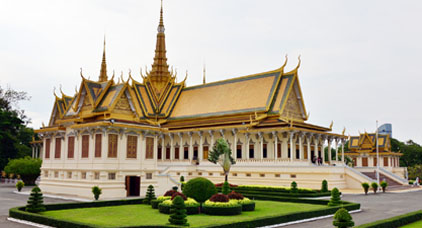
Gleaming in gold, the Royal Palace is one of Phnom Penh?s most splendid architectural achievements. It is home to His Majesty Preah Bat smdech Preah Norodom Sihanouk and Her Majesty Preah Reach Akka-Mohesey Norodom Monineath. The palace was built in 1866 by His Majeaty Preah Bat Norodom, great grandfather to our current King. The Royal Palace is built on the site of the old town. This site was especially chosen by a Commission of Royal Ministers and Astrologers because it had great geographi-cal significance in relation to the King, who was regarded as a direct descendant of the gods, whose role it was to live and govern on earth under the influence of heaven.
Source: Tourism of Cambodia
http://www.tourismcambodia
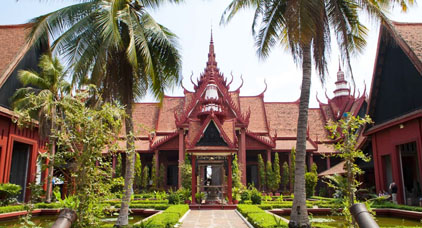
Between 1975 and 1978,aabout 17,000 men, women, children and infants (including nine westerners), detained and tortured at S-21 prison (now Tuol Sleng Museum), were transported to the extermination to death to avoid wasting precious bullets.The remains of 8985 people, many of whom were bound and blindfolded, were exhumed in 1980 from mass graves in this one-time long an orchard; 43 of the 129 communal graves here have been left untouched. Fragment of Human bone and bits of cloth are scattered around the disinterred pits. Over 8000 skulls, arranged by sex, are visible behind the clear glass panels of the Memoral Stupa, which was erected in 1988.The Killing Fields of Choeung Ek are 15 km from Central Phnom Penh.
Source: Tourism of Cambodia
http://www.tourismcambodia
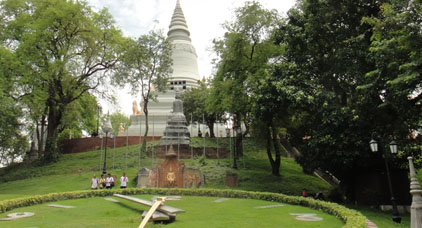
Set on top of a tree-covered knoll 27m high, Wat Phnom is the only hill in town. According to legend, the ï¬rst pagoda on this site was erected in 1373 to house four statues of Buddha deposited here by the waters of the Mekong and discovered by a woman name, Penh. The main entrance to Wat Phnom is via the grand eastern staircase, which is guarded by lions and naga (snake) balustrades. Today, many people come here to pray for good luck and success in school exams or business affairs. When a petitioner's wish is granted, he or she returns to make the offering (such as a garland of jasmine flowers or bananas, of which the spirits are said to be especially fond) promised when the request was made.
Source: Tourism of Cambodia
http://www.tourismcambodia

An Angkorian style tower, the inimitable place in the whole city, located in the heart of the capital. It was built in 1958 to Sybilles Cambodian Independence Day after winning back their independence from the French protec- torate on the 9th of November 1953. The monument attracts many tourists for its peculiar looking but unique style distinguishes it from all the buildings in the city. It is also used as a memorial place dedicated to the Cambo- dian's patriot who died for the country. The Independence Monument (Vimean Ekareach) was inaugurated on November 9, 1962 to celebrate the independence from the French in 1953, but now also serving as a cenotaph to Cambodia?s war dead. The 20-meter high monument was designed by Cambodian architect, Vann Molyva- nn, and is shaped in the form of a lotus, which also can be seen at Angkor and other Khmer historical sites.
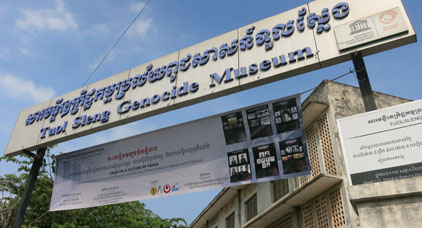
In 1975, Tuol Svay Prey High School was taken over by Pol Pot's security force and turned into a prison known as Security Prison 21 (S-21). It soon became the largest such center of detention and torture in the country. Over 17,000 people held at S-21 were taken to the extermination camp at Choeung Ek to be executed; detainees who died during torture were buried in mass graves in the prison grounds. S-21 has been turned into the Tuol Sleng Museum, which serves as a testament to the crimes of the Khmer Rough. The museum's entrance is on the western side of 113 St just north of 350 St, and it is open daily from 7 to 11.30 am and from 2 to 5.30 pm; entry is US$2.Like the Nazis, the Khmer Rough was meticulous in keeping records of their barbarism.
Source: Tourism of Cambodia
http://www.tourismcambodia
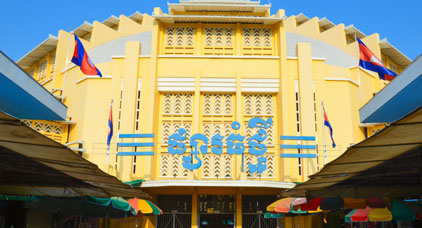
The dark-yellow Art Deco Phsa Thmei (New Market) is also referred to as the Central Market, a reference to its location and size. It was constructed in 1935. The Art deco building is shaped in the form of a cross with a nice central dome. And has four wings ï¬lled with shops selling gold and silver jewelry, antique coins, fake name-brand watches and other such items. Around the main buildings are stalls offering Krama (checked scarves), stationery, household items, cloth for sarongs, flowers and second hand clothes, usually from Europe and the US. For photographers, the fresh food section affords a lot of opportunities. There are a host of good value food stalls on the structure's western side, which faces Monivong Blvd. Central Market is undoubtedly the best of Phnom Penh's markets for browsing.
Source: Tourism of Cambodia
http://www.tourismcambodia
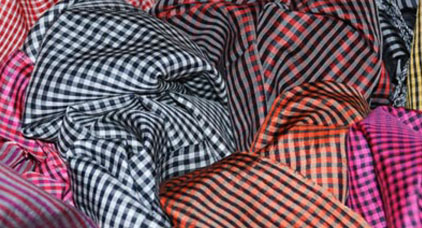
So-named because of the prevalence of items from the Eastern Bloc in past times, the Toul Tom Poung Market today is a treasure trove for tourists. Particular items worth seeking out include CDs, fabrics, jewelry, carved handicrafts and ceramics. There are also a large number of clothing outlets and on site tailors and seamstresses can make alteration quickly. The food and drinks stalls are a good place to take a refreshment break between the bargaining.
Source: Tourism of Cambodia
http://www.tourismcambodia
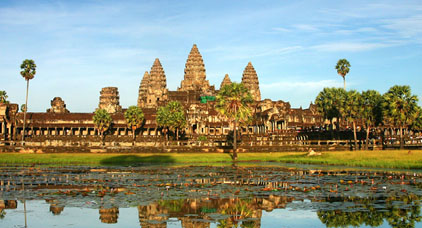
Angkor Wat, in its beauty and state of preservation, is unrivaled. Its mightiness and magnificence bespeak a pomp and a luxury surpassing that of a Pharaoh or a Shah Jahan, an impressiveness greater than that of the Pyramids, an artistic distinctiveness as fine as that of the Taj Mahal. Angkor Wat is located about six kilometers (four miles) north of Siem Reap, south of Angkor Thom. Entry and exit to Angkor Wat can only be access from its west gate. Angkor Wat was built in the first half of the 12th century (113-5BC). Estimated construction time of the temple is 30 years by King Suryavarman II, dedicated to Vishnu (Hindu), replica of Angkor Thom style of art.
Source: Tourism of Cambodia
http://www.tourismcambodia
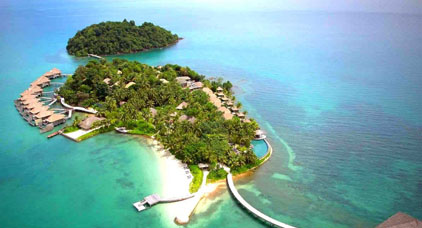
Koh Rong Island is a Cambodian Island in the Gulf of Thailand, at about 40km off the coast of Sihanoukville. Actually, the island is deserted, undeveloped and untouched. It's a secret island. But it will be soon one of the famous touristic destination of Cambodia. The island is certainly the most beautiful island of the Kompong Som Region. A snowdrift bay, covered by a crystal clear and turquoise water, stretches on several kilometers. At the center, a jungle with thousands of coconut palms and waterfalls invade the island. Paradise found on Koh Rong
Source: Tourism of Cambodia
http://www.tourismcambodia
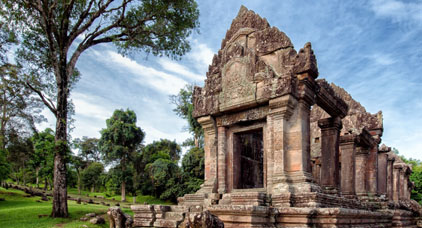
Preah Vihear is quite a big northern province of Cambodia. Its capital is called Phnom Tbeng Meanchey. The province itself is named after the temple of Prasat Preah Vihear, what is deï¬nitely the hotspot of this province. Much of the province is extremely remote and strongly forested. Unfortunately do large logging companies reduce the natural landscape by carving huge tracts of pristine tropical hardwoods out of the locations. It is also one of the least populated provinces in the Kingdom of Cambodia. This tranquil site is popular for the Preah Vihear temple, standing in the vicinity of the borderline between Thailand and Cambodia. The province has one of the worst infrastructures in the country there are even no proper Major Roads in existence.
Source: Tourism of Cambodia
http://www.tourismcambodia